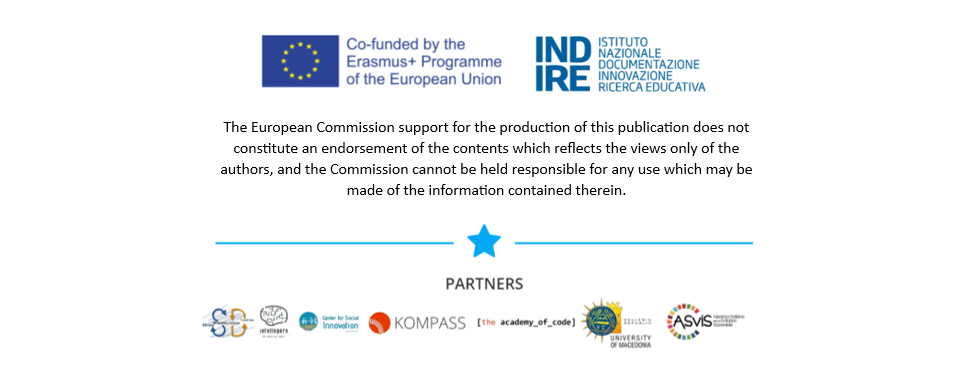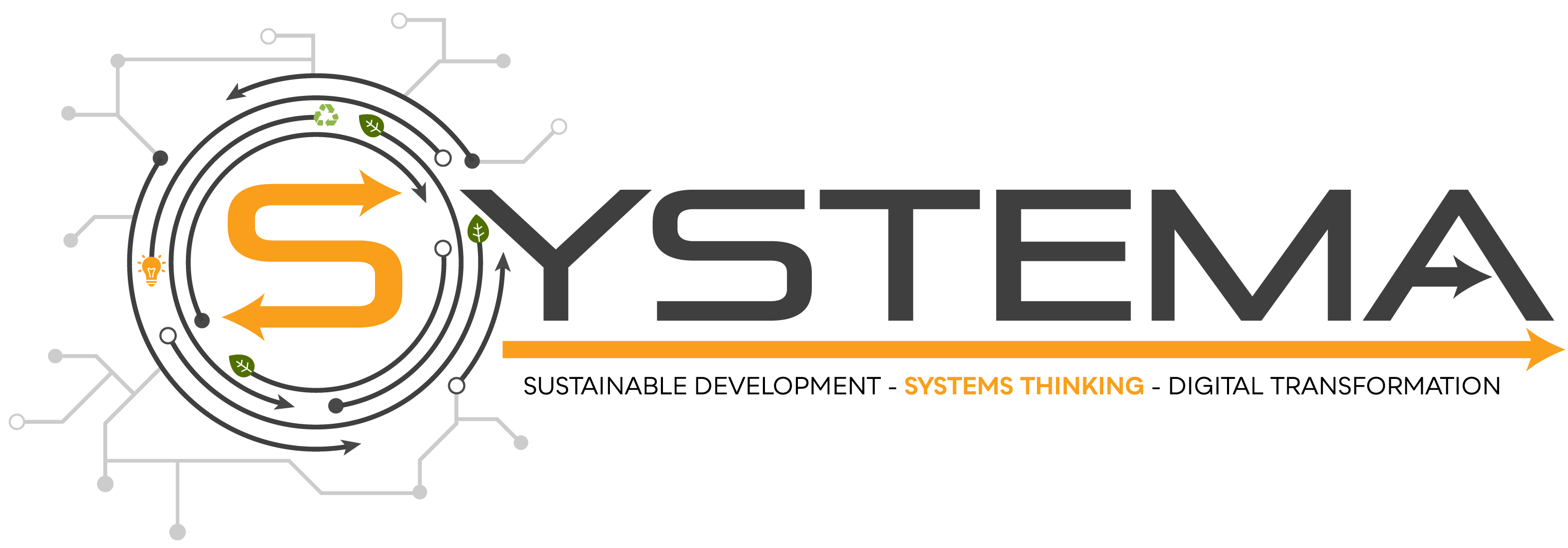The recent pandemic has shown us how deeply the different sectors of society are linked together. The ability to “connect the dots” to influence a highly complex reality has therefore become indispensable to face the challenges that await us in the near future.
"As we have been affirming for some time, the objective of public policies in the current phase is to minimize the negative effects of the shock and to maximize the ‘transformative resilience’ of the socio-economic system. […] To this end, the Government should adopt a long-term strategic vision that defines the desired objectives of sustainable development using innovative tools and approaches and systemic thinking in the formulation and implementation of policies”. These are the words of Enrico Giovannini, former director for ASviS and now Minister of Infrastructure and Sustainable Mobility, during an audition at the VIII Committee of the Chamber of Deputies (Environment, territory and public works) to define priorities on the use of European funds from the Recovery plan. In this speech, Giovannini stressed the need to apply “systemic thinking” to public policies to achieve the Sustainable Development Goals. But what does “applying systemic thinking” actually mean?
Reflecting on the recent pandemic, we have noticed how Covid-19, born from natural causes (the spillover effect, or the leap among species) first impacted the health of individuals, but then, almost like a ripple, affected economic capital (reduction of productive capacity, accelerated fall in investments and current and future wealth), on human capital (unemployment and underemployment, increase in poverty and inequalities, negative impact on training activities for young people), on social capital (reduction of interactions, operational difficulties for the Third Sector), generating the crisis we are still experiencing. These signals show us how the different sectors - environmental, economic, social and institutional - are linked and contaminate each other.
For this reason, the ability to "connect the dots", to understand a "highly complex" world, is becoming increasingly indispensable. To act and change the reality that surrounds us, it is therefore essential to trace the links between the different sectors, to use a systemic overview. This approach is important for identifying the effects that a single intervention (individual initiative, public policy, activity of a private company) can generate on different sectors of society, definitively abandoning the policies limited to individual fields of action.
The most emblematic example of a systemic approach we have today is the 2030 Agenda for sustainable development, signed on 25 September 2015 by 193 United Nations countries, including Italy, to share the commitment to guarantee a better present and future for our planet and the people who inhabit it. The global agenda defines 17 Sustainable Development Goalsto be achieved by 2030, divided into 169 Targets, which define a route, for Italy and for the rest of the world, to the path of sustainability.
This Agenda stems from the consideration that our development model is unsustainable, on an environmental and economic and social level, but above all it intends to overcome the idea that sustainability is only an environmental matter, proposing an integrated vision of the different dimensions of development. The profound novelty of the 2030 Agenda is therefore the idea that the 17 Goals cannot be considered as individual objectives, but rather that they are connected to each other, that in a certain sense they "communicate": guaranteeing quality, equitable and inclusive education (SDG 4) in fact also means offering equal opportunities to women (SDG 5); to ensure health and well-being (SDG 3), it is necessary to live on a healthy planet (SDGs 6, 13, 14 and 15), as we have seen in the recent pandemic; decent work for all (SDG 8) requires the elimination of inequalities (SDG 10). The SDGs are therefore strongly interconnected, and the improvement of one affects the progress of all. The 2030 Agenda, therefore, is a challenge to the complexity of global issues, with the hope of winning it.
However, we have many more examples: let's take the case of the One Health approach, an eco-systemic paradigm coined in 2004 during the conference organized by the Wild conservation society (Manhattan principles), which takes into account in an integrated way the risks associated with factors of environmental and anthropogenic origin and of the global risks of pandemics, expressing the awareness of the strong interconnections between health and other sectors. According to the One Health approach, in fact, it will not be possible to adequately influence the health system if we do not take into account the relationships between human health and that of the animal and plant world, the importance of social and economic issues in individual well-being and health, integration between the social and health systems, of the need for a multilevel governance that knows how to act simultaneously on all these areas of intervention. In short, of a system that knows how to recognize the need to address health conditioned by global interconnections. This approach has so far been applied only to animal health, food safety, zoonotic epidemics, but, according to this new paradigm, it will also concern in the future the pollution of natural resources, the destruction of biodiversity, urban design and spatial planning, production and transport, such as the exploitation of technological and IT potentials. The principle of “Health in all policies” also derives from the awareness of the interconnections, expressed in the declaration signed in 2007 by the ministries of health of the 27 EU countries, according to which a joint analysis of health, sustainability and equity issues is required to approve any type of intervention or policy. Health policies must be accompanied by food, environmental, educational and labor policies, economic development, transport, housing and safety policies.
But let's also think about climate change, and how its cycle, both negatively and positively, can affect work activities. Strong pollution (caused by numerous agents, including the use of fossil fuels, unsustainable mobility, the lack of an effective waste recycling system) combined with deforestation, decrease in biodiversity and many other factors, generate effects such as the melting of the ice caps, floods, aridity of soil, water scarcity. These phenomena have not only environmental, but also economic and social consequences, and weigh on the economy of individual countries, impacting agriculture, livestock and the livelihoods of millions of people. These conditions generate not only a structural and widespread impoverishment, but also phenomena such as climate migration (by 2050, it is estimated that there will be over 200 million migrants in the world, a number almost equivalent to the population of Brazil) or profound malnutrition. From this point of view, we can easily understand how the use of renewable resources (for example solar, wind, hydroelectric energy) does not bring benefits "only" to the energy system or the surrounding environment, but creates a virtuous circle that affects also positively on economic and social inequalities.
The idea of smart cities is also based on the same need for interrelationships, the so-called "smart cities" which, due to the significant use of new technologies in urban development, are often mistakenly attributed to the concept of "digital cities". A “smart city”, in fact, is much more. A metropolis can be considered “smart” when it manages its economic and environmental resources, housing policies and transport, relations between people and methods of administration in an innovative way. Among these approaches, for example, we can identify the possibility of locating large car parks outside the cities, well connected by public transport; or promoting energy-efficient buildings, or initiatives for a drastic reduction of waste. Smart cities are therefore cities capable of identifying the connections between the different sectors, intervening at the same time on the basis of a structured systemic approach.
A similar push is also at the origin of the idea of "sustainable tourism" which, according to the UNWTO (World Tourism Organization), must satisfy "the needs of travelers and host regions" and, at the same time, protect and improve " opportunities for the future ". The phenomenon of excessive tourism (when the number of tourists grows so much as to bring the big cities that host them to their knees) is in fact growing exponentially, and affects many aspects of the life of a tourist location: from natural resources (pollution of environment and the use of unsustainable means of transport, such as airplanes), local infrastructures and mobility, socio-cultural factors. Sustainable tourism, on the other hand, is based on good practices such as respect for local culture (immersing yourself in the local culture and respecting its uses and customs) and the rational use of natural resources.
For these and many other reasons, reflecting on an integrated approach between the different policies of our society (from the fight against poverty to climate change, from environmental and health deterioration to the improvement of school structures and gender inequalities) becomes essential not only to understand the reality that surrounds us, but also to influence it, designing a future that can be considered truly sustainable.

